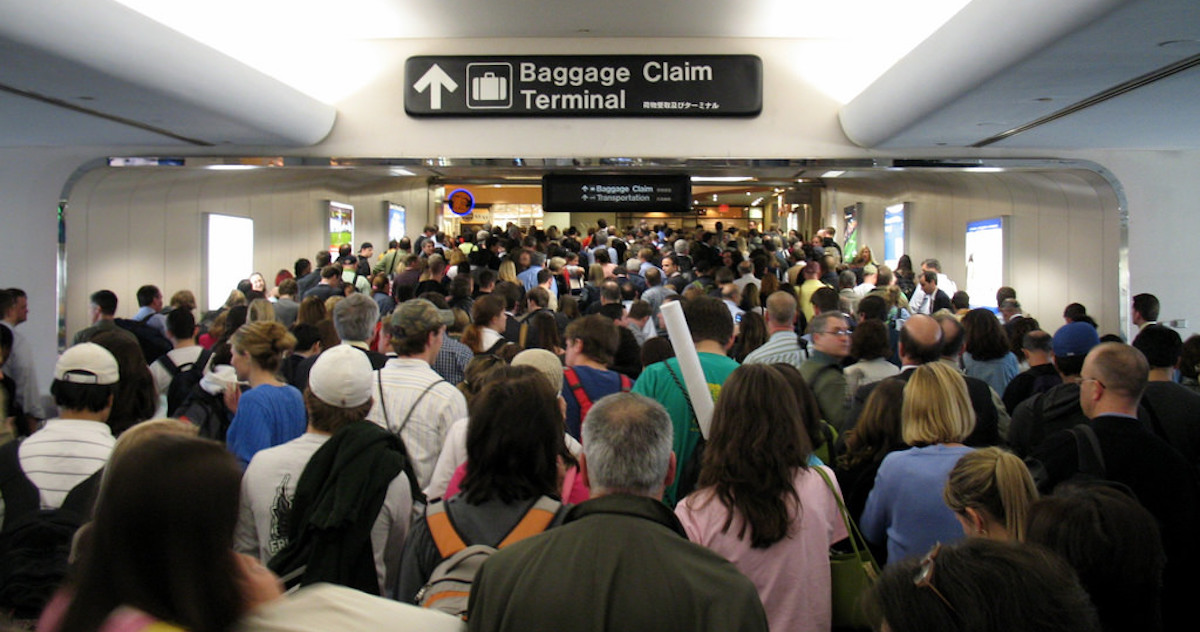
“After Florida’s Baggage Claim Shooting, Everyone Is Wondering, ‘What Exactly Are The Rules?'”
After a lone gunman left five dead and dozens wounded at Florida’s Fort Lauderdale-Hollywood airport it was discovered that he pulled the gun used in the attack from his checked luggage.
“The suspect in the Florida shooting, 26-year-old Esteban Santiago, allegedly loaded the gun in a bathroom before opening fire in the baggage claim area of Terminal 2,” Broward County Commissioner Chip LaMarca posted on Facebook. Santiago is now in federal custody.
In the aftermath of the shooting many travelers report a growing sense of insecurity and a need to know more about the rules that apply to in-air gun carry and the people who are there to enforce them. What exactly are those rules?
According to the Transportation Security Administration passengers are allowed to carry firearm while traveling through US airports, but strict rules govern how passengers are to handle, package, and report each gun.
Firearms must remain unloaded and kept “in a locked hard-sided container as checked baggage only,” according to the Transportation Security Administration’s website. The TSA also requires locked cases that cannot be easily opened and “only the passenger should retain the key or combination to the lock.”
According to the Business Insider, In 2015 the TSA discovered 2,653 firearms in carry-on bags and 2,198 of those — that’s 80 percent — were loaded. The TSA’s blog.reported that this was a 20 percent increase over 2014.The agency has not yet released data for 2016, but has been collecting data on firearms found in carry-on bags weekly.

Transporting Firearms and Ammunition
You may transport unloaded firearms in a locked hard-sided container as checked baggage only. Declare the firearm and/or ammunition to the airline when checking your bag at the ticket counter. The container must completely secure the firearm from being accessed. Locked cases that can be easily opened are not permitted. Be aware that the container the firearm was in when purchased may not adequately secure the firearm when it is transported in checked baggage.
Firearms
• When traveling, comply with the laws concerning possession of firearms as they vary by local, state and international governments.
• Declare each firearm each time you present it for transport as checked baggage. Ask your airline about limitations or fees that may apply.
• Firearms must be unloaded and locked in a hard-sided container and transported as checked baggage only. Only the passenger should retain the key or combination to the lock.
• Firearm parts, including magazines, clips, bolts and firing pins, are prohibited in carry-on baggage, but may be transported in checked baggage.
• Replica firearms, including firearm replicas that are toys, may be transported in checked baggage only.
•Rifle scopes are permitted in carry-on and checked baggage.
United States Code, Title 18, Part 1, Chapter 44, firearm definitions includes: any weapon (including a starter gun) which will, or is designed to, or may readily be converted to expel a projectile by the action of an explosive; the frame or receiver of any such weapon; any firearm muffler or firearm silencer; and any destructive device. As defined by 49 CFR 1540.5 a loaded firearm has a live round of ammunition, or any component thereof, in the chamber or cylinder or in a magazine inserted in the firearm.
Ammunition
• Ammunition is prohibited in carry-on baggage, but may be transported in checked baggage.
• Firearm magazines and ammunition clips, whether loaded or empty, must be securely boxed or included within a hard-sided case containing an unloaded firearm. Read the requirements governing the transport of ammunition in checked baggage as defined by 49 CFR 175.10 (a)(8).
• Small arms ammunition, including ammunition not exceeding .75 caliber and shotgun shells of any gauge, may be carried in the same hard-sided case as the firearm.
Contact the TSA Contact Center with questions you have regarding TSA firearm regulations and for clarification on what you may or may not transport in your carry-on or checked baggage.
Sources: tsa.gov, http://www.businessinsider.com